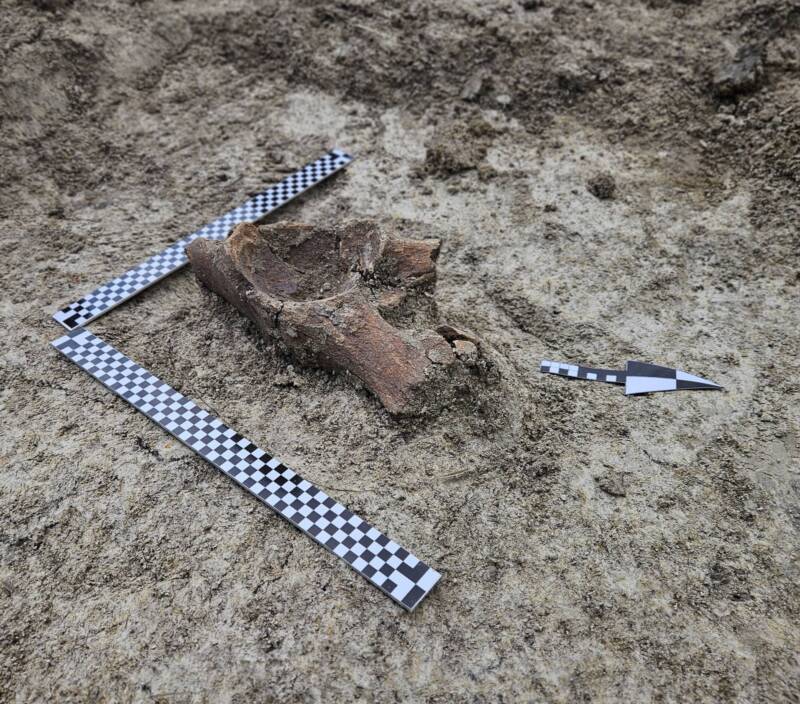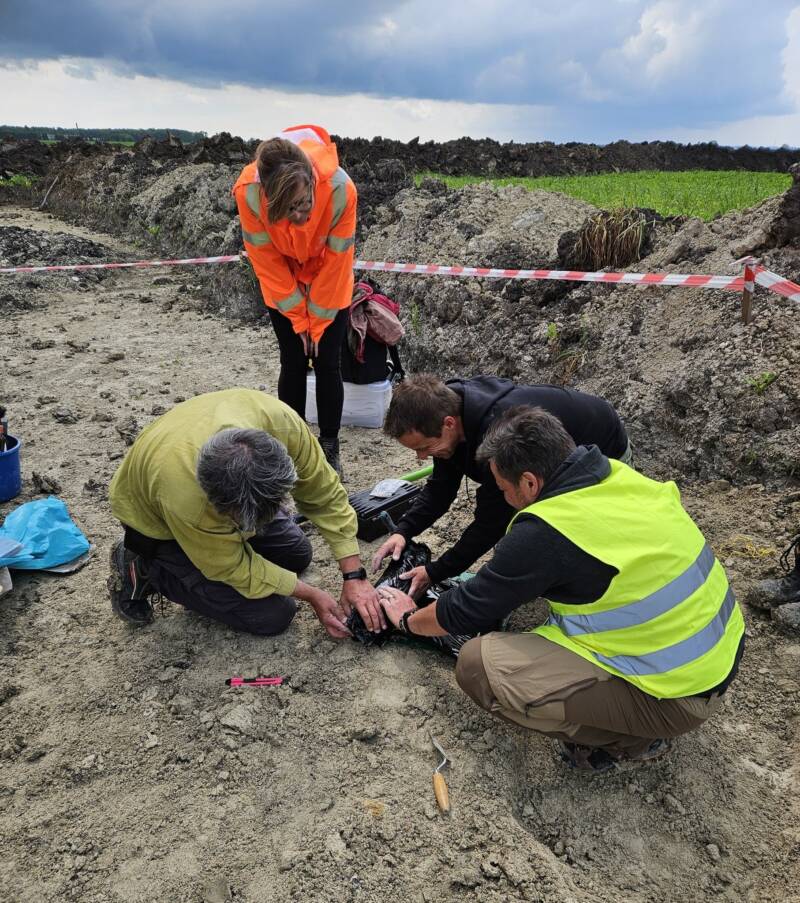While excavating the route of a planned highway, archaeologists found a tusk and pelvis bone dating to the Ice Age.

Institute of Archaeology at Maria Curie-Skłodowska University via FacebookThis pelvis bone either belonged to a mammoth or a forest elephant.
In the village of Łabunie, Poland, archaeologists have unearthed the tusk of a mammoth as well as a pelvis bone believed to have come from either a mammoth or a forest elephant. These finds came amid excavations ahead of the construction of a new highway.
The prehistoric remains are now in the possession of experts from Maria Curie-Skłodowska University (UMCS) in Lublin for analysis. Initially, the discovery was kept under wraps so as not to attract unwanted visitors to the site, but now some details about the find have been made public.
The Mammoth Remains Unearthed During The Construction Of A Highway
As reported by Notes From Poland, Rafał Niedźwiadek from the Institute of Archaeology at UMCS spoke with local TVN24 about the rarity of this discovery. He went on to say that further work is required to find the remains of “the people who hunted the mammoth.”
Researchers have so far dated the tusk and pelvis to the Pleistocene era, between 2.6 million and 11,700 years ago. This period is more commonly known as the Ice Age due to the continental glaciers that covered much of the world, including Poland.
During the Ice Age, mammoths roamed the steppe, a vast, cold grassland stretching from Europe across Asia and into the Americas. They stood between nine and 12 feet tall on average and weighed up to seven tons (14,000 pounds).

Institute of Archaeology at Maria Curie-Skłodowska University via FacebookArchaeologists at the excavation site.
Mammoths had long, curved tusks, a dense fleece of guard hairs and underfur, a layer of fat, short ears, and a tail — all suited for surviving the extreme cold. They were herbivores and grazed primarily on grasses, sedges, and shrubs, using their tusks to sweep snow away.
They coexisted with humans and other predators like wolves and saber-toothed cats, which meant they were regularly hunted for meat and their fur and bones. Other sites from the same period have revealed tools made from mammoth bones, indicating part of the reason they were highly sought after. This hunting, along with massive climate shifts, ultimately led to the extinction of the mammoth.
Alongside these mammoth remains, archaeologists also uncovered a trove of artifacts spanning thousands of years.
Other Discoveries Made During The Excavations

Institute of Archaeology at Maria Curie-Skłodowska University via FacebookConstruction of the new highway is planned to last through 2030.
As construction is underway for the S17 expressway — a 75-mile roadway stretching from Piaski near Lublin to Hrebenne on the Polish-Ukrainian border — various excavation sites have been examined by archaeologists.
Around Łabunie alone, archaeologists have surveyed an area of around 240 acres and made several fascinating discoveries.
At one site, researchers found the remains of a settlement from the Middle Ages, including residential buildings, several hundred ceramic fragments, and a well.
They also discovered a “potter’s cup” from the Neolithic period dating back to between 2500 and 1900 B.C.E. It was made from clay and featured decorative horizontal grooves characteristic of the Corded Ware culture, which lived in the area during the Late Neolithic and Early Bronze Age. It was found alongside human bones, suggesting it was part of a gravesite.
As construction is set to continue on the highway for the next five years, there are bound to be even more exciting discoveries to come.
After reading about the mammoth remains found during road construction in Poland, learn about these 11 terrifying prehistoric animals. Or, discover when mammoths went extinct.





